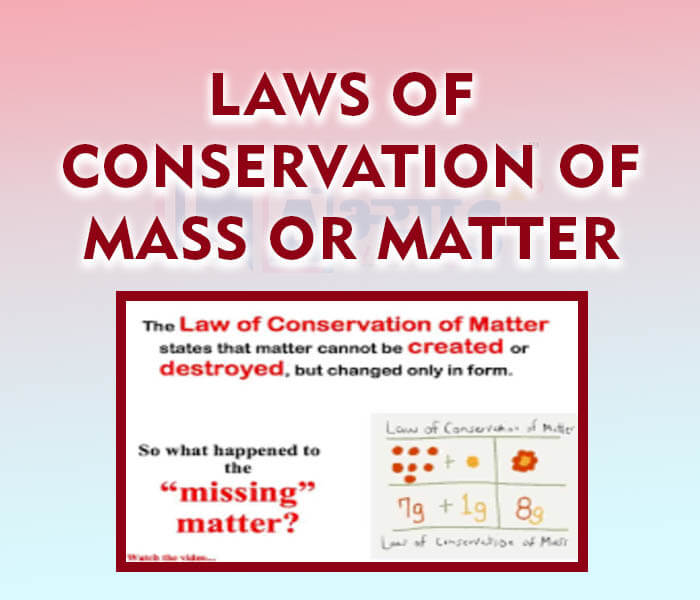Law of Conservation of Mass or Matter







Law of Conservation of Mass or Matter
Law of Conservation of Mass: It states, “mass can neither be created nor be destroyed during a chemical reaction.” This means that in any chemical reaction, the total mass of the reactants is equal to the total mass of the products and there is no change in mass during the chemical reaction. It is also known as law of indestructibility of matter.
Illustration: If 4.0 g of sodium carbonate reacts with 10 g of hydrochloric acid, it results in the formation of 2.5 g of carbon dioxide and 11.5 g of sodium chloride solution. Show that these results are in accordance with the law of conservation of mass.
Here, total mass of reactants = 4.0 + 10 = 14 g
What is the weight of oxygen that is required for the complete combustion of 0.7 kg of ethylene? | |||
| Right Option : D | |||
| View Explanation | |||
If 2.0 g of sodium carbonate reacts with 5 g of hydrochloric acid, it results in the formation of 2 g of carbon dioxide and 5 g of sodium chloride solution. Show that these results are in accordance with the law of conservation of mass. | |||
| Right Option : A | |||
| View Explanation | |||
During any physical or chemical change, the total mass of products is equal to the total mass of reactant. It is known as ___________________ | |||
| Right Option : A | |||
| View Explanation | |||
Students / Parents Reviews [10]
Abhyas is a complete education Institute. Here extreme care is taken by teacher with the help of regular exam. Extra classes also conducted by the institute, if the student is weak.

Om Umang
10thAbout Abhyas metholodology the teachers are very nice and hardworking toward students.The Centre Head Mrs Anu Sethi is also a brilliant teacher.Abhyas has taught me how to overcome problems and has always taken my doubts and suppoeted me.

Shreya Shrivastava
8thAbhyas Methodology is very good. It is based on according to student and each child manages accordingly to its properly. Methodology has improved the abilities of students to shine them in future.

Manish Kumar
10thMy experience with Abhyas is very good. I have learnt many things here like vedic maths and reasoning also. Teachers here first take our doubts and then there are assignments to verify our weak points.

Shivam Rana
7thOne of the best institutes to develope a child interest in studies.Provides SST and English knowledge also unlike other institutes. Teachers are co operative and friendly online tests andPPT develope practical knowledge also.

Aman Kumar Shrivastava
10thMy experience with Abhyas academy is very good. I did not think that my every subject coming here will be so strong. The main thing is that the online tests had made me learn here more things.

Hiya Gupta
8thA marvelous experience with Abhyas. I am glad to share that my ward has achieved more than enough at the Ambala ABHYAS centre. Years have passed on and more and more he has gained. May the centre flourish and develop day by day by the grace of God.

Archit Segal
7thIt has a great methodology. Students here can get analysis to their test quickly.We can learn easily through PPTs and the testing methods are good. We know that where we have to practice

Barkha Arora
10thBeing a parent, I saw my daughter improvement in her studies by seeing a good result in all day to day compititive exam TMO, NSO, IEO etc and as well as studies. I have got a fruitful result from my daughter.

Prisha Gupta
8thI have spent a wonderful time in Abhyas academy. It has made my reasoning more apt, English more stronger and Maths an interesting subject for me. It has given me a habbit of self studying
